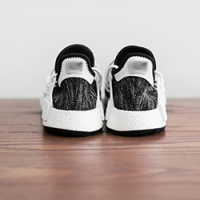
New evidence published in the Cochrane Library this month provides strong evidence that falls in people over 60 can be prevented by exercise programs. Falls are a leading cause of accidental or unintentional injury deaths worldwide. Older adults suffer the greatest number of fatal falls and over 37 million falls are severe enough to require medical attention each year.
A new Cochrane Review produced by a team of researchers from the University of Sydney and University of Oxford summarises the results from 108 randomized controlled trials with 23,407 participants from across 25 countries. The average age of the participants in the studies was 76 years old and three quarters of them were women. Eighty-one of these trials compared exercise (all types) versus a control intervention (doing no exercise or minimal gentle exercise that is not thought to reduce falls) in people living independently at home, in retirement villages, or in sheltered accommodation.
The review looked at two different ways of measuring falls. Firstly, they found that exercise reduces the number of falls over time by around a quarter (23% reduction). This means that if there were 850 falls among 1000 older people doing no fall-preventive exercise during one year, there would be 195 fewer falls among people who were undertaking fall-prevention exercise. They also found that exercise reduces the number of people experiencing one or more falls (number of fallers) by around a sixth (15% reduction). For example, if 480 out of 1000 people experienced one or more falls over one year, participating in exercise programmes would reduce the number of fallers by 72 people.
The review found that exercise programs carried out in group classes or done at home prescribed by a health professional (such as a physiotherapist) or a trained exercise leader were effective. Exercises were mostly done while standing as this better enhances balance and the ability to do daily activities such as standing up from a low chair or climbing stairs. Some effective exercise programs also used weights to make the exercises harder.
The results of the studies varied so the researchers assessed different types of exercise programs to see how they compared. There is high certainty evidence that programs that mainly involve balance and functional exercises reduce falls, while there was less certainty about programs that include multiple exercise categories (most commonly balance and functional exercises plus resistance exercises). Tai Chi may also prevent falls but there is uncertain evidence on the effectiveness of resistance exercises (without balance and functional exercises) including dance or walking.
The certainty of the evidence for the overall effect of exercise on preventing falls was high. However, the findings that exercise reduces fractures and the need for medical attention are less certain, reflecting in part the relatively small number of studies and participants for those outcomes.
The reporting of the side effects of exercise in the trials was limited but when side effects were reported they were usually not serious, such as joint or muscle pain; however, one trial reported a pelvic stress fracture.
'We know that keeping active promotes good health, but this review pinpoints which types of exercise are more likely to be effective for preventing falls,' lead review author Professor Cathie Sherrington says.'This evidence helps build an even stronger picture that exercise can help prevent older people having falls. It also illustrates which types of exercise can be beneficial. More work is needed to establish the impact of exercise on fall-related fractures and falls requiring medical attention because such falls have major impacts for the individual and are particularly costly to health systems. Further research is also required to establish the effectiveness of fall prevention programs in emerging economies where the burden of falls is increasing more quickly than in developed countries due to ageing populations.
> Catch author Cathie Sherrington exploring the findings of this review on the ABC RN Health Report
